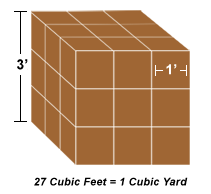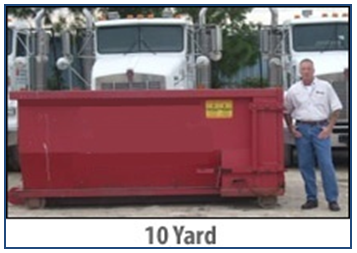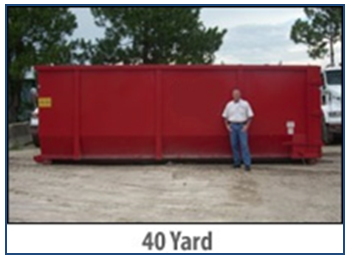Module 7 – Trash Outs & Items Removal
Chapter 17: Classifications & Guidelines
Item Removal Introduction
Post-sale properties differ from their pre-sale counterparts in several ways. One of the most important of which is that the mortgagor no longer maintains any rights to the property or its contents. For this reason, item removal services for post-sale properties typically consist of a full trash out rather than the removal of specified types or amounts of items commonly seen within the pre-sale world. A trash out can be defined as the removal and disposal of all of the contents on the interior and exterior of a property regardless of their classification. The amount of items to be removed will vary widely depending upon the approach taken to the pre-sale servicing of the property. Field service professionals should be prepared for all circumstances ranging from small amounts of debris to large amounts that may take several hours to remove.
Many brokers will have opinions related to the removal of particular items from a property. It is imperative that a contractor contact the broker prior to completing a trash out to prevent the unintentional removal of an item that the broker may have felt added value to the property (e.g. playground equipment, benches, construction materials, etc.). Failure to leave items as requested or removal of items without prior broker consultation could lead to their dissatisfaction and unnecessary quality complaints.
In general, yard waste is typically included within a trash out. However, the philosophy regarding these items will vary by client. If the client adheres to this approach these items should be bid separately for removal. When providing these bids, contractors should indicate the risk that their presence poses to the property.
Some clients may caveat their trash out orders with exceptions related to the amount of personals or debris present. For example, a work order may request that a bid be provided rather than completing a trash out for properties where over $500 dollars in personals are present or where over 25 cubic yards of debris is present. As a result it is important that field service professionals be well versed in the classification of items for removal.
Common Classifications
The three main classifications are debris, hazards and personal property.
Debris
Webster’s dictionary defines debris as, “the remains of something broken down or destroyed; or something discarded.” There are two categories of debris – interior and exterior.
Exterior Debris
Exterior debris can be found outside of enclosed structures on the property (i.e. tree limbs, grass clippings, garbage, broken lawn furniture, etc.).
Interior Debris
Interior debris consists of debris located within the living space on the property including attached/detached garages, attics, basements, crawl spaces, and outbuildings.
One may also come across items that must be disposed of in a specific manner in order to avoid challenge from a dump site, dumpster company or the local authorities. These items are referred to as household hazardous wastes (HHW) and should be included within documentation and bids for the removal of debris despite this classification.
Household hazardous waste consists of items commonly found within a home that are available for over-the-counter purchase including: household cleaners and laundry detergents, canned and non-refrigerated food and drink, personal grooming products, glue, car wax, light bulbs, rock salt/ice melt, household batteries, candles, fertilizer and lawn chemicals, pool chemicals and 5 gallons or less of treated paint products.
Paint can be treated in a variety of ways. The most cost effective but potentially more time consuming method is to brush it onto cardboard or other disposable flat surface to dry and then dispose of painted items and cans. Another faster method involves introducing an additive into the paint to accelerate the drying process. Acceptable additives include kitty litter, saw dust, sand and products designed specifically for this treatment. Once the paint has dried in the can it can then be disposed of with the rest of the debris.
Awareness and adherence to the state and local requirements (including licensure and permits) for the removal of these items is imperative as failure to comply may result in fines and other preventable legal consequences.
Hazardous Items
Items considered to be hazardous include those that may cause physical harm or infestation risk to the property and the surrounding community. Hazardous materials include raw garbage, broken glass, chemicals (description required to verify not HHW), feces, household solvents (description required to verify not HHW), car batteries, tires, oil, gasoline, dead animals, solvent-based and spray can paints, treated paint products of over 5 gallons in volume (i.e. stain, shellac, varnish, wood preservatives, latex and oil-based paints), roof coatings, driveway sealer, caulks, etc.
As with paint in small quantities (considered household hazardous waste), paint in larger quantities must also be treated prior to disposal. To recap, the most cost effective but potentially more time consuming method is to brush it onto cardboard or other disposable flat surface to dry and then dispose of painted items and cans. Another faster method involves introducing an additive into the paint to accelerate the drying process. Acceptable additives include kitty litter, saw dust, sand and products designed specifically for this treatment. Once the paint has dried in the can it can then be disposed of with the rest of the hazards.
Awareness and adherence to the state and local requirements (including licensure and permits) for the removal of these items is imperative as failure to comply may result in fines and other preventable legal consequences. Contact your local solid waste management district for further information regarding approved and prohibited substances and appropriate disposal methods.
Personal Property
The legal dictionary at FindLaw.com defines personal property as, “property that is movable but not including crops or other resources still attached to land: property other than real property.” Personal property includes tables, chairs, utensils, dishes, furniture, antiques, heirlooms, clothing, lawn furniture, swing sets, toys, electronics, tools, jewelry, collectibles, lawn and yard maintenance equipment, grills, unused construction materials, vehicles, firearms, etc.
Within the realm of field services, personal property is often defined as an item that has a yard sale value. There are many online resources available to determine the yard sale value of an item. Organizations such as Goodwill Industries International, Inc. publish valuation guidelines for donations that are comparable to those of yard sales and can be used as a guide in determining the value of personal property.
It is important to provide the client with a description, approximate value and photographic documentation of personal property when necessary. If firearms are found at a property it is imperative that both the client and local law enforcement be notified immediately. This may mean a call from the field in order to ensure the safety of the surrounding community.
Vehicle Removal
Requirements for the removal of abandoned vehicles and other titled items from a property will vary by client. These items may or may not be included within a trash out order. When requested, bids for these items should be separated out from other items found at the property. Vehicles should be handled in accordance with any applicable local and state guidelines. This may result in a need to remove and store the vehicle for a period of time. It is always best to contact local law enforcement prior to removing any vehicle as they may require that a specific towing company be utilized to carry out this service. If removal is not required by your client, the vehicle(s) should always be documented, photographed and reported inclusive of the make/model of the car, license plate number (if applicable) and VIN number. In the case that a vehicle is removed and a tow/flatbed after photo is not available, a tow receipt should be provided with the removal date, the make/model of the car, license plate number (if applicable) and VIN number.
Guidelines for Item Removal
Removal requirements vary by client. It is imperative that you be aware of the work order and client requirements in order to complete this service correctly and with as little liability as possible for your company. If there is a question regarding the classification of an item to be removed a good rule of thumb is, ‘when in doubt, bid it out’. If contacting a client or broker for direction prior to providing a bid, be sure to note the pertinent contact information for whoever provides the advice within your documentation.
Items to be removed during a trash out are typically quantified by the cubic yard. A cubic yard is defined as a 3ft. x 3.ft. x 3ft. volume.
 Courtesy of: http://www.landscapecalculator.com/how-it-works/stone-mulch.aspx
Courtesy of: http://www.landscapecalculator.com/how-it-works/stone-mulch.aspx
 A 10 cubic yard dumpster measuring 12’x8’x4′ will typically hold:
A 10 cubic yard dumpster measuring 12’x8’x4′ will typically hold:
- 20 squares of shingles
- 2,500 square feet of drywall
- 1,400 square feet of vinyl or aluminum siding
- 275 square yards of carpet or pad
 A 20 cubic yard dumpster measuring 22’x8’x4.5′ will typically hold:
A 20 cubic yard dumpster measuring 22’x8’x4.5′ will typically hold:
- 40 squares of shingles
- 5,000 square feet of drywall
- 2,800 square feet of vinyl or aluminum siding
- 550 square yards of carpet or pad
 A 30 cubic yard dumpster measuring 22’x8’x6′ will typically hold:
A 30 cubic yard dumpster measuring 22’x8’x6′ will typically hold:
- 60 squares of shingles
- 7,500 square feet of drywall
- 4,200 square feet of vinyl or aluminum siding
- 825 square yards of carpet or pad
 A 40 cubic yard dumpster measuring 22’x8’x8′ will typically hold:
A 40 cubic yard dumpster measuring 22’x8’x8′ will typically hold:
- 80 squares of shingles
- 10,000 square feet of drywall, or
- 5,600 square feet of vinyl or aluminum siding
- 1,100 square yards of carpet or pad
Hauling items away from a property can be completed in a variety of ways. The method used will depend largely on the volume of items to be removed as well as the procedures employed by your company for the management of waste. Contractor size trash bags are often used for smaller amounts, truck beds and trailers for mid-size amounts and dumpsters for the largest cleanouts. It is important to utilize the right method of hauling for the size of the job to ensure the fastest turnaround time for completion. Unless instructed to do so, debris should NEVER be set at a curb for disposal. Dump facilities or dumpster services should always be used to provide a traceable path for the items removed. Dump receipts should be kept on file and submitted as necessary to verify removal to acceptable facilities. In the case of storage, a storage receipt should also be kept on file and submitted if requested. There are a few safety precautions that should always be taken when removing items from a property. First and foremost, gloves and appropriate shoes should be worn to prevent injuries to hands and feet. Heavy items should be moved by teams or with the use of sliders, dollies and or furniture slings to avoid back injuries. If removing items that are toxic or may pose a health risk, masks and coveralls should be employed. Chemicals should NEVER be mixed into large drums for disposal to avoid potential interactions which may pose a health threat. Documentation of removal or lack thereof is one of the biggest areas of liability for a company both in that missing documentation can result in denial of an invoice as well as leaving room for quality complaints against the client and the contractor. As a best practice, photos should be taken during the initial visit to a property to document its entire contents even if they are not submitted to the client. Should a quality dispute arise, a client will often work with the contractor to determine the location of the items in question and these photos may be the key to prevailing in these circumstances. When removing items it is a best practice to provide the following photos:
- Before photo showing items in their current location*
- An after photo showing items removed from location
- A photo of items on truck/in dumpster
*Items should not be staged or unnecessarily grouped together Tools Required for Item Removal
- Contractor trash bags
- Gloves
- Masks
- Rakes
- Brooms
- Gas Powered Blower
- Trailer or truck bed
- Dumpster
- Work Boots
- Coveralls
- Safety Glasses
Challenges There are many areas that are often overlooked during the initial visit to a property. Many clients may withhold payment for an entire flat fee order when debris is found after the completion of a trash out that cannot be proven to be the result of dumping. Debris can be hidden in out of the way areas. To avoid this oversight
- Remember to walk the entire property
- Double check the entire property prior to leaving
- Use a flash light for properties without electrical service
- Check commonly missed areas, including:
∙ Behind outbuildings ∙ Between a house and fence ∙ Crawlspaces ∙ Attics ∙ Kitchen drawers ∙ Garage rafters ∙ Closets ∙ Debris hidden in grass or under yard waste
